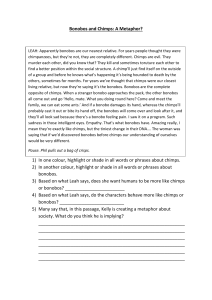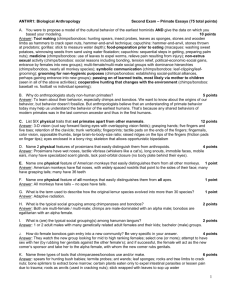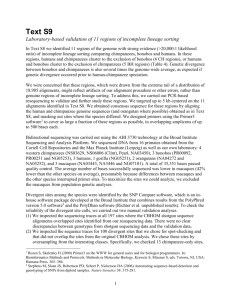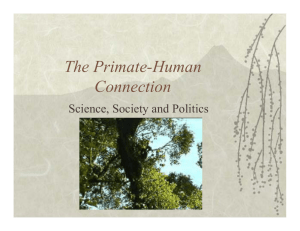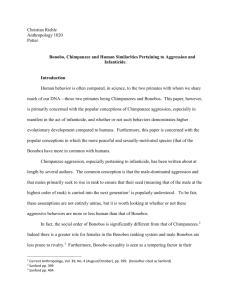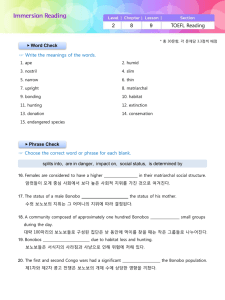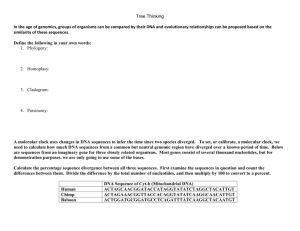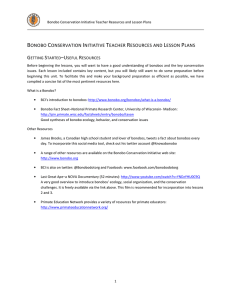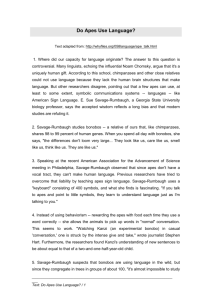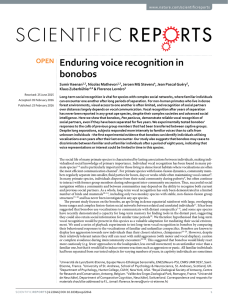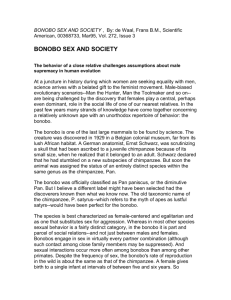Bonobo Survival - Bonobo Conservation Initiative
advertisement
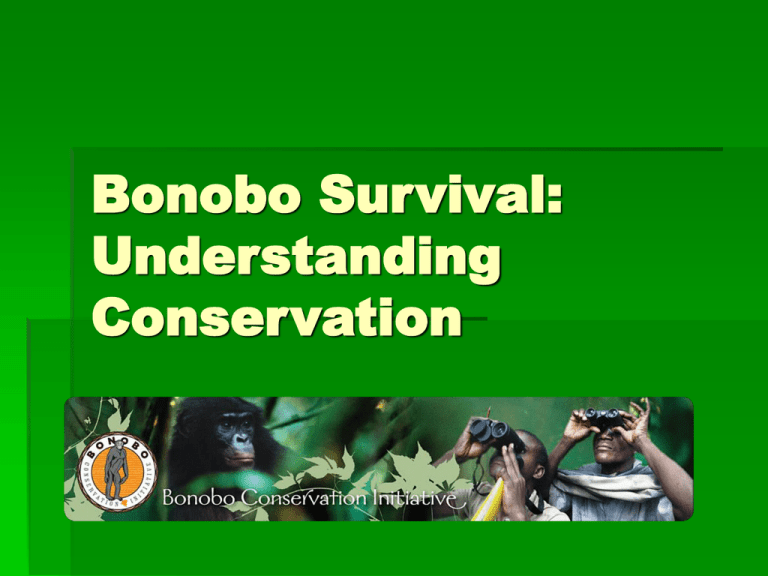
Bonobo Survival: Understanding Conservation Bonobos are: Great apes Residents of the Democratic Republic of Congo Very social beings Matriarchal Egalitarian Peaceful Endangered Bonobos are an endangered species At this point, no one knows how many bonobos remain. Estimates range from 5,000 to 50,000 total. Bonobos are in extreme peril. What do bonobos need to survive? Food A home – forests Safety The two biggest specific threats to bonobos are: Hunting and habitat destruction Life is tough for many residents of the Democratic Republic of Congo The Congo War, which officially ended in 2003, claimed more than 4 million lives. The people and the communities were badly affected by all the violence. Many people lost their farms or their jobs. The people are still trying to rebuild, and most live in extreme poverty. Hunting for “bushmeat” People living within and near the forests hunt wild animals, “bushmeat,” as a way of life and means for survival. They have for a very long time. Increasingly, however, people are also hunting wild animals, including bonobos, for sale in the commercial bushmeat trade. Illegal Logging The Congolese government has a current ban on new logging. But illegal logging continues. This destroys bonobo habitat. Key Points Some people are motivated by a need to survive. There are few jobs and many people are hungry. Some people are motivated by greed. They do not know the harm they are causing, or they do not care. What should be done to save bonobos and ensure they can live safe lives? Habitat protection – bonobos need their forest home Sustainable jobs - bonobos’ human neighbors need jobs and forms of livelihood which do not hurt animals Action and enforcement – laws created to protect bonobos and their home need to be enforced Education – the more people know, they more likely they are to care Conservation has to have many components
